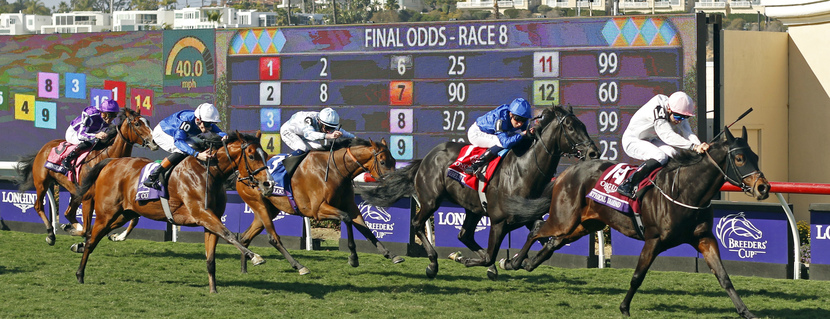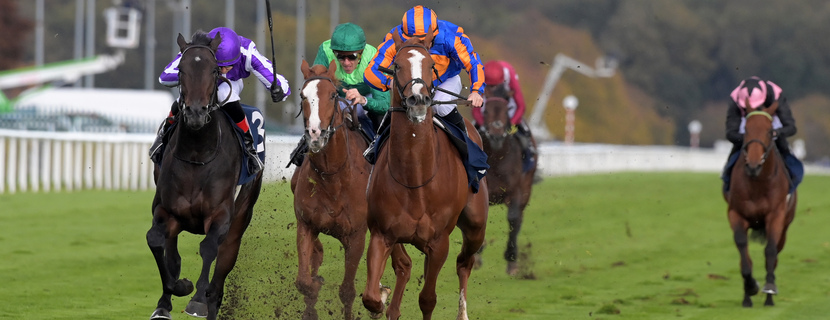Last week I shared my research into how the four-race pace totals on the Geegeez racecards performed across UK 5f handicaps in 2024 (excluding 2yo nurseries), writes Dave Renham. You can catch up with that article here. The results overall were impressive given we were looking essentially at raw figures with minimal additional ‘tinkering’.
Contents
ToggleIntroduction
This week I am going to focus on the same dataset but combine the pace rating positions / scores with Dr Peter May’s ratings (the SR column in the Gold racecard).
To recap, the pace tab shows the running styles of the horses for a maximum of their last four races. Each past running style is given a score of between four and one. The splits are as follows:
4 – Front runner / early leader
3 – Prominent racer
2 – Raced in midfield / mid division
1 – held up near or at the back early
The SR ratings are derived from a neural network developed by Peter May. They are much more than a measure of speed; they include a number of form considerations making them a sort of composite of, in Racing Post terms, RPR (Racing Post Rating) and TS (Topspeed) - both of which we also publish in the racecards.
SR Ratings by Win Strike Rate and P/L
My starting point for this article is to see how the SR ratings performed in 5f handicaps in 2024 starting with win strike rate. The graph below shows the splits:
The rating position correlates well with the win strike rate, although the 5th and 6th rated are reversed. Top rated runners have won just over 17% of the time, while those rated 7th or higher have definitely struggled from a win perspective.
I want to now look at the profit/loss figures for the top three rated runners from the SR ratings. This is because later in the article I will combining the top three in the SR ratings with the top three horses in terms of their four-run pace totals (which I order highest to lowest and call the Pace Ratings Rank). Here are the results in terms of the top three ranked in the SR ratings:
As we can see, the top-rated SR runners would have lost a small amount if backing all qualifiers blind. Second rated have nudged into profit while the third rated have seen losses around the 8p in the £.
Combining SR Top Rated with Pace Rank Top Rated
Now we know the raw performance of the SR ratings I will begin to combine them with what I call the Pace Ratings Rank. Let's first look at what would have happened if only backing runners that were top rated by both set of ratings. Here are the numbers:
This is a positive start to the Pace / SR collab! The strike rate has equated to just under one win in every five with returns of over 16p in the £. There were also 26 qualifiers that finished runner-up which is another strong positive meaning that 50 of 124 finished in the first two.
If we expand this slightly to the top three of the ratings for both, we get the following results:
We have increased the number of bets by around 6.5 times whilst keeping a similar strike rate, although return on investment is slightly less. On the upside, though, we would have made more money in profit terms (from a bigger outlay of course). There were 126 qualifiers that finished second including some at tasty BSP odds such as 40.21, 47.97 and 46.0. There was also a third that was beaten just over a length in a 28-runner handicap at BSP odds of 123.97. The horse in question, No Half Measures, raced at Ascot (21/6/24) and was arguably very unlucky having been the best finisher in the far side group in a race where nine of the first ten home raced up the centre of the course.
Considering we are just combining two different ratings in this way, to get such positive results for higher rated runners in both sets, with no other considerations, is extremely encouraging. Now, I appreciate it is just one year of handicap results at one distance, but 809 horses is a decent sample.
Performance of the Lowest Rated on Pace and SR
Let's now switch and combine lower rated runners from both the Pace Rankings and SR ratings. I am looking at the results of horses rated 8th or lower in both rating sets. Here are their combined results:
These are very poor results which breeds more confidence in our earlier positive findings when combining higher rated runners from both rating sets.
Top Three Rated on Pace and SR by Handicap Age Restriction
If we split the 809 horses that were top three rated on both Pace Rank and SR Rating into 3yo only, 3yo+ and 4yo+ races we get the following results:
All three returned a profit, and all three had relatively similar ROIs. These figures demonstrate that these higher rated runners from both sets of ratings have performed consistently regardless of the ages of the horses taking part.
Top Three Rated on Pace and SR by Selected Courses: Positive
I want next to examine the performance of the top three rated on both metrics at a selection of courses that between 2017 and 2023 had the strongest front running biases over the 5f trip. I sourced these courses in the first article by examining individual track performances of early leaders / front runners during that seven-year prior time frame. I used a combination of win percentages, placed percentages and A/E indices to formulate the list.
To recap the 12 courses were: Ayr, Chelmsford, Chester, Hamilton, Kempton, Leicester, Lingfield, Redcar, Ripon, Thirsk, Windsor and York. In that piece I examined solely the top-rated runners from their previous four-run pace totals rather than the top three.
Here now are the figures for horses that were in the top three of both the Pace Ratings and the SR ratings when running at one of those 12 courses:
That's another very solid set of results with a strike rate close to 20% and returns of over 21p in the £.
Composite Ranking Performance
My next port of call was to combine the ranking positions of both sets of ratings to create an overall numerical total. Hence if a horse was top-rated in the SR ratings and ranked 5th in the Pace Ratings/totals that would score six (1+5); if a horse was ranked 4th in both it would score eight (4+4) and so on. Now we know already what a total of two has achieved as those were the results shared earlier for the top-rated in both. Below I have combined the numerical totals into bands in a graph that shows the strike rates for each one:
This graph offers further evidence that combining the higher rated runners in each set produces better strike rates. We have the sliding scale of percentages that we always want to see when looking at any type of rating-based data set. Meanwhile, the 2-4 band (i.e. SR 1st/ Pace 1st, SR 2nd/ Pace 1st, SR 1st/Pace 2nd, and SR 2nd/Pace 2nd) have a very solid strike rate close to 19%.
Using the same calculation method and the same bands I thought it would be worthwhile to look at the Percentage of Rivals Beaten (PRB) figures. This metric considers all finishing positions based on the number of runners in each race. It is a useful metric to analyse where possible. Here are the splits:
The chart presents further strong evidence of the positive correlation we have seen throughout this article in relation to the importance of ranking position within the two sets of ratings. 58% of rivals beaten for the 2-4 band is a materially high PRB figure.
Let me now share the runs, wins, profits / losses for each band:
It is pleasing to see the 2-4 band producing the best ROI% and also seeing the 5-7 band in profit. The 11-14 group have proved profitable but essentially, they had the biggest-priced winner in the whole year (BSP 127.21) which skews their bottom line considerably. The 20+ band would, not surprisingly, have produced very poor returns from a very low strike rate.
Top Rated on SR and 15 or 16 Pace Total
In the first article I looked at some of the data for the highest four-race pace totals, namely 15 and 16. Hence, horses that had gained these scores had led early in either three or all four of those runs. Based on historical research, I've shown that it is reasonable to think that these horses are the most likely to lead in their next race. So what would have happened if we had backed the top-rated SR runner when they had a pace total of 15 or 16? The results read:
This gives us a small cohort of runners but even from a small sample the figures look promising. The PRB figure is an excellent 0.62 which adds confidence to this small set.
Top Three Rated on SR and 15 or 16 Pace Total
What happens if we expand this to the top three rated in the SR ratings with runners who had a pace total of 15 or 16? The splits are:
The number of bets has nearly tripled and although the strike rate and the ROI% have dropped a little, the results are still very positive. The PRB has dropped a little too, but it still stands at a very strong 60% of rivals beaten.
Top Three Rated on SR and Pace Rank, ISP 12/1 or shorter
Finally in this piece I am going to go back to look at the results for horses that were in top three of both the SR ratings and Pace Ratings / totals. To date I have not put in any price restrictions, but as we all know a BSP 100.0 winner can skew the bottom line considerably. One of the main reasons I haven't is because all of the bigger priced winners (BSP 30.0 or more) came from horses that were not in the top three of both. If anything, other rating position bottom lines have been the ones that have been skewed.
However, I felt it only right to share the figures for the top three rated in each when we restrict the price, and to make it clean I am using an Industry SP price cap of 12/1. So, just to clarify, the figures below are those for horses that were in the top three of both ratings and were priced ISP 12/1 or less. The figures are as follows:
These figures are better than the overall figures for top three in both. A 14p in the £ profit over 720 bets would have been an excellent return. The PRB for these runners is a very strong 0.60. All of this from just two things that can be very easily found on the Geegeez Gold Racecards.
Now that looks very good value to me!
- DR
p.s. if you're unclear how to find these, follow the steps below:
1 Look for 5f UK (turf or AW) handicaps, and ignore 2yo races
2 On the PACE tab, select 'last 4 races' and 'Data' view, and sort by Total. Then find the top rated or top three rated in the SR column. In this example, from last night, Jeans Maite was top rated on both last-four Pace Score and SR - and, as you can see from the second image below, won at 7/2 (BSP 4.97).
Made all, won!


























Hi Dave,
As always, an impressively well researched and presented piece. I think a lot of readers will undoubtedly be taking heed of your findings.
I’ve always thought it a bit of a scoop for Geegeez to get permission to publish Peter May’s master ratings. Your research underlines the value these can provide.
I can’t add anything useful – this is more of a thank you not only to you but to Matt for bringing you and Peter under his umbrella. If there were anything I could possibly add in terms of usefulness, it’s the fact that Peter May sets a lot of store by the SP of a horse’s last run. I wouldn’t dilute the above findings with that (it’s not easily checkable anyway) but for anyone using Peter’s SR ratings in any context, you could do worse than consider this extra nugget of data.
All the best,
Russ
Very kind words Russ – greatly appreciated. Interesting nugget too – thanks. Dave
Hi Dave this is an excellent and informative piece.
Any chance you could split by Flat / AW? and any going considerations?
Just to ask, because obviously Geegeez doesn’t do the likely pace BEFORE the race, are the Pace rankings taken retrospectively (AFTER the race).
Hope that makes sense.
Certainly 1 for me to monitor.
My ‘ pace ratings’ are based on the pace figures from the racecard before the race. I’ll look into the AW / turf numbers for you.
Dave
thanks Dave
Would be interesting to see the data for front runners over 5f on irish courses.
Would topsppeed or postmark be suitable benchmark alternative for peter mays ratings, pm ratings not being available over irish courses.
Hi Mike
Quite possibly although not that many Irish courses run over 5f which would make the dataset quite small.
Dave
Dave,
Do you have any data from this work that would suggest the longest losing run(s)in the ‘20%’ successes or any seasonal bias eg summer or winter
/
Hi Dave,
Thanks for this, and for all your work. It’s really excellent, and a pleasure to read and use.
Just a small query. I assume if two or three qualify, we back them all, when combining top 3 in SR and top 3 in Pace. As far as I can see, there’s 3 qualifiers in the 5.37 at Doncaster today, Wee Mary, Novamay and Step Along (3rd in SR, Joint 3rd in pace). Just wanted to be sure that’s the right thing to do.
Leave a Reply
Want to join the discussion?Feel free to contribute!